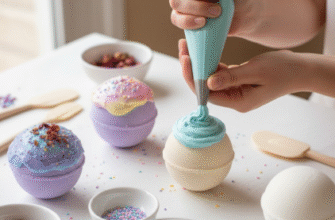Creating a sanctuary within your own home isn’t about replicating a commercial spa down to the last detail. Instead, it’s about capturing that elusive feeling – the calm, the quiet luxury, the sense of escape. Achieving this often involves walking a fine line between minimalism and coziness. It might sound contradictory; minimalism often evokes images of sparse, perhaps even cold, spaces, while coziness brings to mind warmth, softness, and abundance. Yet, merging these two concepts creates a powerful aesthetic: intentional, uncluttered, deeply comfortable, and restorative. It’s about curating an environment that soothes the senses without overwhelming them.
Understanding the Harmony: Minimalism Meets Coziness
Minimalism, in the context of home decor, isn’t about stark emptiness. It’s fundamentally about intentionality. It means choosing items deliberately, focusing on function and quality over quantity, and eliminating clutter that distracts or stresses. Clean lines, uncluttered surfaces, and a sense of order are hallmarks. It provides the ‘breathing room’ for relaxation.
Coziness, on the other hand, speaks to comfort, warmth, and a feeling of being enveloped and safe. It’s achieved through soft textures, warm lighting, familiar objects, and elements that invite you to slow down and relax. Think plush throws, soft rugs, the gentle flicker of candlelight, or the aroma of essential oils. Coziness provides the ‘soul’ and the ‘welcome home’ feeling.
The magic happens when these two principles inform each other. Minimalism ensures the space remains serene and functional, preventing coziness from tipping over into clutter. Coziness ensures the minimalist framework feels inviting and human, preventing it from feeling sterile or impersonal. It’s a curated comfort, a thoughtful warmth.
Laying the Foundation: Color and Material Choices
The Power of a Neutral Palette
The foundation of a minimalist spa aesthetic often lies in its color scheme. Neutrals reign supreme, creating a calm backdrop that allows textures and subtle details to shine. Think beyond stark white:
- Warm Whites: Creamy whites or those with a hint of beige feel softer and more inviting than pure, cool whites.
- Soft Grays: From pale dove gray to deeper charcoal (used sparingly as an accent), grays offer sophistication and tranquility. Look for warmer undertones.
- Earthy Beiges and Taupes: These connect the space to nature and provide inherent warmth.
- Wood Tones: Natural wood, whether light like bamboo or maple, or slightly richer like oak, is crucial for adding warmth and grounding the space.
While the core palette is neutral, you can introduce subtle hints of color for personality. Muted greens (sage, moss), soft blues (sky, dusty blue), or even pale terracotta can evoke nature and serenity without disrupting the overall calm. Use these in accessories like cushions, throws, artwork, or plants.
Embracing Natural Materials and Tactile Textures
Materials are key to bridging the gap between minimal structure and cozy feeling. Prioritize natural, organic materials that appeal to the sense of touch:
- Wood: As mentioned, wood is essential. Use it in furniture, flooring, decorative bowls, bathmats, or shelving. Its natural grain adds visual interest and warmth.
- Stone: Think travertine, slate, or marble accents. A stone soap dish, a coaster set, or even a stone-topped side table adds earthy elegance.
- Bamboo: Light, sustainable, and perfect for spa accessories like trays, canisters, or even blinds.
- Linen: For bedding, curtains, or tablecloths. Its natural texture is both relaxed and sophisticated.
- Cotton: High-quality, soft cotton for towels and bathrobes is non-negotiable for that spa feel. Waffle weaves or Turkish cotton add great texture.
- Wool and Cashmere: Plush throws or cushions in these materials add instant, luxurious coziness.
- Ceramics: Matte or subtly glazed ceramic vases, pots, or mugs add an artisanal touch.
- Woven Textures: Baskets (for storage or plants), jute or sisal rugs, and woven wall hangings introduce depth and tactile appeal.
The interplay of these textures – smooth wood against soft wool, rough jute against cool ceramic – is what makes the space feel layered and inviting, even within a minimalist framework.
Decluttering: The Minimalist Imperative for Spa Serenity
You cannot achieve a spa-like sense of calm in a cluttered environment. Decluttering is not just about tidying up; it’s about consciously deciding what deserves space in your sanctuary. Ask yourself: Does this item serve a purpose? Does it bring me joy or peace? If not, it might be time to let it go.
Effective Decluttering Strategies:
- Start Small: Don’t try to tackle the whole house at once. Begin with one area, like the bathroom counter or a single shelf.
- Everything Needs a Home: Assign a specific place for every item you decide to keep. This prevents clutter from accumulating again.
- Conceal, Don’t Just Stash: Invest in beautiful storage solutions. Think woven baskets, wooden boxes, minimalist cabinets, or drawer organizers. Keep surfaces as clear as possible.
- The ‘One In, One Out’ Rule: To maintain order, try adopting a rule where bringing a new item into the space means an old one must leave.
- Digitize Paperwork: Reduce paper clutter by scanning important documents and opting for digital bills and statements.
Clearing physical clutter often leads to mental clarity, a core component of the spa experience.
A Note on Balance: Be mindful that the goal isn’t sterile emptiness. While decluttering is vital, ensure you don’t strip away all personality. Keep meaningful objects, display a few cherished pieces, and focus on curated comfort rather than stark deprivation. The aim is serene, not soulless.
Furnishing and Arranging for Flow and Comfort
Furniture choices should align with the minimalist principle of simplicity and functionality, but with an eye towards comfort.
- Clean Lines: Opt for furniture with simple silhouettes and minimal ornamentation.
- Natural Materials: Wooden bed frames, simple upholstered sofas in neutral fabrics, perhaps a stone-topped coffee table.
- Multi-functional Pieces: An ottoman with storage, a side table that can hold a drink and a book.
- Comfort is Key: Ensure seating is genuinely comfortable. A minimalist sofa doesn’t have to be hard; choose one with good support and plush cushions.
- Negative Space: Don’t overcrowd the room. Allow for empty space around furniture – this ‘negative space’ is crucial for a calm, uncluttered feel. It lets the room breathe.
- Create Zones: Even in a small space, mentally designate zones for different activities – a reading nook, a relaxing corner, a clear space for movement or stretching.
The layout should promote easy flow and encourage relaxation. Position seating to take advantage of natural light or a pleasant view, if possible.
Illuminating the Mood: The Importance of Lighting
Lighting is perhaps one of the most critical elements in achieving a cozy spa atmosphere. Harsh overhead lighting is the enemy of relaxation. Aim for layered, warm lighting:
- Natural Light: Maximize it wherever possible. Keep window treatments simple – sheer linen curtains or light wooden blinds allow light in while maintaining privacy.
- Ambient Lighting: This provides overall illumination. Think soft, diffused light from ceiling fixtures (with warm bulbs!) or floor lamps bounced off walls. Dimmers are essential for controlling the mood.
- Task Lighting: Focused light for specific activities, like a reading lamp beside an armchair or soft vanity lighting in the bathroom. Keep it functional but aesthetically pleasing.
- Accent Lighting: Used to highlight specific features, like artwork or plants. Picture lights or small spotlights can work well.
- Candles: The ultimate cozy element. Groupings of pillar candles (real or high-quality LED) or scented candles add warmth, soft light, and ambiance. Choose natural waxes like soy or beeswax.
Always opt for warm-toned bulbs (around 2700K) to enhance the cozy, inviting feel. Avoid cool, blue-toned light, especially in the evening.
Engaging the Senses: Beyond the Visual
A true spa experience engages more than just sight. Consider how to incorporate other sensory elements:
Scent
A subtle, calming fragrance instantly elevates the atmosphere. Avoid artificial air fresheners, which can be overpowering.
- Essential Oil Diffusers: Use high-quality essential oils known for relaxation, like lavender, chamomile, bergamot, sandalwood, or eucalyptus.
- Scented Candles: Choose natural, subtle scents that complement the overall mood.
- Natural Room Sprays: A light mist of a hydrosol (floral water) or a DIY essential oil spray can refresh the space.
- Fresh Flowers or Greenery: Some plants and flowers offer a gentle, natural fragrance.
Sound
Control the auditory environment to promote peace.
- Quiet: Sometimes, the best sound is silence. Good insulation or rugs can help dampen external noise.
- Calming Music: Create playlists of instrumental music, nature sounds, or ambient tracks.
- Small Water Feature: The gentle sound of trickling water can be incredibly soothing.
- Wind Chimes (Subtle): Placed outside a window, delicate chimes can add a peaceful element.
Touch
We’ve touched on this with materials, but consciously think about tactile experiences.
- Plush Towels and Robes: Invest in the best quality you can afford.
- Soft Rugs: Especially bedside or in the bathroom, a soft rug feels luxurious underfoot.
- Smooth Surfaces: The feel of polished wood or smooth stone.
- Comfortable Temperatures: Ensure the room temperature is pleasant.
Bringing Nature Indoors: Biophilic Design Touches
Connecting with nature is inherently calming. Incorporating natural elements is key to the spa aesthetic.
- Plants: Choose plants known for their air-purifying qualities or ease of care, like snake plants, ZZ plants, pothos, or ferns. Even a single, well-placed plant can make a difference. Use simple ceramic or terracotta pots.
- Natural Wood: We’ve covered this, but reiterate its importance as a direct link to the outdoors.
- Stone and Pebbles: A small bowl of smooth river stones or using slate coasters.
- Views: If you have a window with a view of nature, keep it unobstructed.
- Natural Imagery: Simple artwork depicting landscapes, botanical prints, or abstract forms inspired by nature.
Maintaining Your Minimalist Spa Haven
Creating this aesthetic is one thing; maintaining it requires ongoing mindfulness.
- Regular Tidying: Incorporate quick daily or weekly tidying routines to prevent clutter buildup. Put things back in their designated homes.
- Conscious Consumption: Before bringing new items into your space, ask if they truly fit the aesthetic and serve a purpose or bring joy.
- Seasonal Refresh: Swap out throws or cushion covers seasonally to keep the space feeling fresh but cohesive.
Ultimately, curating a minimalist yet cozy spa aesthetic is about creating a personal retreat. It’s a space designed with intention, focusing on elements that calm your mind, soothe your senses, and provide comfort. By carefully balancing the principles of minimalism – simplicity, order, function – with the warmth of coziness – texture, soft lighting, natural elements – you can transform your home into a haven of peaceful relaxation, a place where you can truly unwind and recharge every single day.








